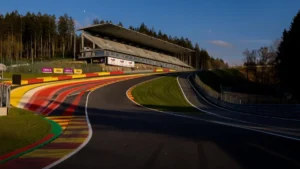Le Mans racing, often referred to as the “Grand Prix of Endurance and Efficiency,” is a legendary motorsport event that has captivated motorsports enthusiasts around the world for nearly a century. Held annually at the Circuit de la Sarthe in Le Mans, France, the race is renowned for its gruelling 24-hour duration, where drivers, teams, and cars are pushed to their limits. This article delves into the rich history, the unique challenges, and the enduring allure of Le Mans racing.
History
The origins of Le Mans racing can be traced back to 1923 when the Automobile Club de l’Ouest (ACO) organized the first 24 Hours of Le Mans race. The event was initially conceived as a means to showcase automotive endurance and reliability. Over the years, Le Mans has evolved into one of the most prestigious and iconic motorsport events worldwide.
Circuit de la Sarthe
The Circuit de la Sarthe is the epicentre of Le Mans racing. Spanning over 13.6 kilometres, it comprises a combination of permanent track sections and public roads, creating a unique blend of high-speed straights and challenging corners. The circuit’s most famous section is the Mulsanne Straight, a 6-kilometre arrow-straight stretch where cars reach blistering speeds of over 320 km/h before heavy braking into the Mulsanne Corner. The intricate Porsche Curves, Indianapolis, and Arnage corners test the drivers’ skill and concentration, demanding a delicate balance between speed and precision.
Classes and Regulations
Le Mans racing features multiple classes that compete simultaneously on the track. The premier class is the Le Mans Prototype 1 (LMP1), which showcases the pinnacle of automotive technology with hybrid powertrains and innovative aerodynamics. LMP2 class focuses on cost-effective and competitive racing, often featuring cars from independent teams. Additionally, the GT classes showcase production-based vehicles modified for racing, with GT Pro consisting of factory-supported teams and GT Am featuring amateur drivers.
The race regulations impose limitations on fuel usage, pit stops, driver stints and overall performance to promote fairness and strategy. Technical innovations, such as energy recovery systems and aerodynamic advancements, have significantly influenced the evolution of Le Mans racing.
Challenges of Le Mans
Le Mans racing presents drivers and teams with an array of challenges. The most obvious is the race duration itself, as teams must balance speed with mechanical reliability to complete the demanding 24-hour race. The changing weather conditions, including rain and darkness, further compound the difficulty. Additionally, navigating traffic becomes a crucial aspect, as the faster prototypes weave through the slower GT cars, demanding constant awareness and decision-making.
Le Mans racing holds a unique allure that distinguishes it from other motorsport events. The combination of speed, endurance, and strategy provides a captivating spectacle for spectators. The race’s legacy and tradition, coupled with the pursuit of engineering excellence, attract legendary manufacturers and drivers to compete at Le Mans.
The event has witnessed numerous iconic moments and legendary rivalries, etching itself into motorsport folklore. From the intense battles between Ford and Ferrari in the 1960s to the dominance of Porsche in the 1970s and Audi’s reign in the 2000s, Le Mans has consistently delivered unforgettable racing moments.
Conclusion
Le Mans racing remains an unparalleled test of endurance, speed, and innovation. With its rich history, challenging circuit, and fierce competition, the event continues to captivate motorsport fans worldwide. As technology and regulations evolve, Le Mans racing will undoubtedly embrace new innovations while preserving its timeless allure.
Also Read: How can MotoGP help in a return for F1 to India?
“Get more sports news, cricket news, and football updates, log on to sportsdigest.in. Follow us on Facebook or Twitter and Subscribe to our YouTube Channel.”






















